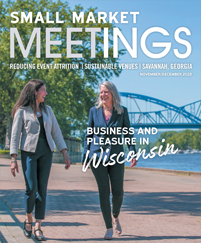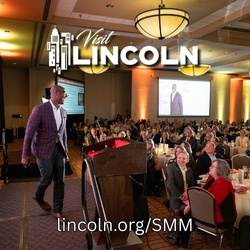When it comes to goal setting, financier Warren Buffett’s process is flat-out Midwestern in its straightforward simplicity. His advice boils down to this: Identify 25 goals, circle the top five, focus on them, forget the rest.
Such streamlining can move a lot of things forward in life, including work challenges. To keep up in the meetings industry requires change. But when you face too many changes at once, it can be hard to focus.
Better to take a few small steps and make slow but steady progress. Here are five steps you could take to improve your events — and your life — in 2020.
Invest in a better work life.
Put yourself at the top of the list for a change. What one purchase in 2020 could improve your work life? Maybe it is a major investment, like a new office chair or a speedier tablet. Chances are good you are among the 478 million people that the U.S. Travel Association projects will travel for business in 2020. Travel is hard on both body and spirit, so investments like light, durable spinner luggage, a fashionable $25 blanket scarf for chilly flights or a lightweight eye mask and noise-canceling headphones for restful travel are inexpensive but priceless in terms of well-being.
Take small bites toward better meals.
It’s easier to digest your food when you take smaller bites. And small changes are easier to swallow when it comes to making conference meals more interesting.
So instead of overhauling your event food-and-beverage program completely, change one meal. Forgo traditional continental breakfast for breakfast bowls. Westin Hotels has done this with ancient grains bowls enhanced by protein add-ins like peanut butter or eggs.
With nearly one-fifth of Americans claiming to be vegetarian or moving in that direction, try an all-veggie luncheon. New faux meat products like Beyond Burgers make it easier to win acceptance of hardcore carnivores; a meal of fresh vegetables will also be popular with those who are weight conscious or concerned about heart health, two major worries of American diners. You can also promote such a meal as being kind to the earth, a la Meat Free Monday, a movement started 10 years ago by Paul McCartney and his family to slow climate change, conserve natural resources and improve health by going meat-free one day a week.
Seriously, get out of the box.
If you haven’t already, break out of the ballroom. If you have, do it again, in a different type of venue. From Crain’s Business Report to the Knoxville Sentinel newspaper, meeting professionals are talking up nontraditional spaces. Especially for smaller meetings, the options are abundant: breweries, wineries, warehouses, music hot spots, burger joints. Larger events also have options nearly everywhere. Towns like Roanoke, Virginia, and Louisville, Kentucky, have been known to shut down streets and take parties to the pavement. Airplane hangars are big, roomy and, when the weather’s good, easily become open-air. Botanical gardens and greenhouses can breathe a sigh of relief into a stuffy dinner. One group that has become adept at planning small off-site events is the Association of Writers and Writing Programs. At its annual conference each year, it stages readings and performances at small venues. When AWP met in Portland, Oregon, last year, it used theaters, bookstores, coffee shops and bars. And it wisely made sure each venue met all accessibility requirements.
Plan for families.
Work already takes people away from their families eight or more hours a day; do you really want to contribute to the separation? Conferences, especially those aimed at associations and religious groups, will likely see attendance increase if they have conferences over weekends or during school breaks and choose destinations with plenty for family members to do. It doesn’t have to be Disney; a beachfront hotel with some play pools can keep a family entertained. Destinations rich in history — think Williamsburg, Virginia, and its Colonial Williamsburg or Springfield, Illinois, and its Lincoln sites — are entertaining and educational. In the winter, a hotel with a water park or a ski resort with slopes for tubing can offer brisk fun. And don’t forget to build in events that involve everyone: a beach party with volleyball, a fall picnic or a bonfire with s’mores.
Step up social media efforts.
If you don’t think social media can connect your audience, consider this story about a schoolteacher who started a Facebook page to keep her peers informed about opportunities for teachers to learn and grow. She started by asking her network of teacher friends to follow the page, and before long, as they shared the page with their friends, the number of followers grew to 10,000. Now it is 20,000. The point is that a Facebook page that promotes your conference and nothing more is OK, but a page that keeps people engaged throughout the year and promotes the conference is even better. Of course, Facebook is just one social media platform — and the largest by far. The key is to look at your audience, determine which platforms best suit it and put them to work to build awareness of what your organization does and why its meetings and conferences are worth attending.












